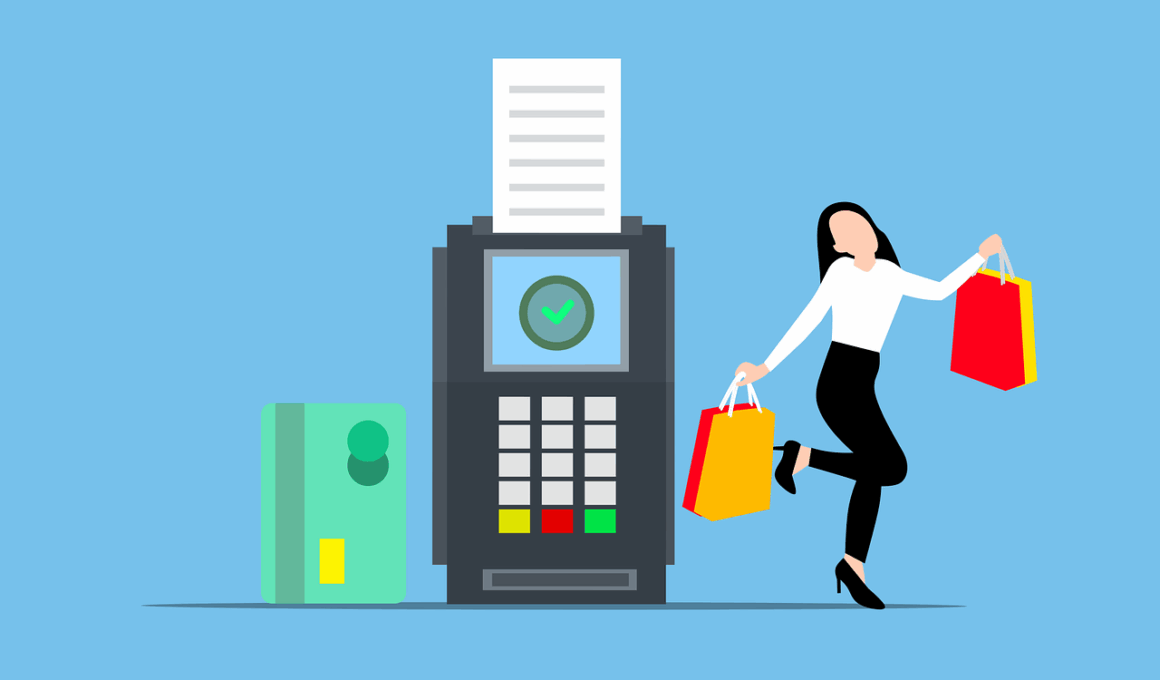Emotional Triggers That Affect Consumer Spending Patterns
Consumer behavior is heavily influenced by emotions, particularly when it comes to spending patterns. Understanding how various emotions affect decision-making can help businesses target their marketing strategies effectively. For instance, joy and excitement often lead to impulsive purchasing, as consumers associate these feelings with positive experiences. Alternatively, negative emotions like fear and anxiety may drive consumers to seek comfort in their spending habits. By utilizing both psychological research and emotional insights, businesses can create tailored experiences aimed at resonating with consumers on a deeper level. The emotional appeal of advertisements plays a significant role in grabbing attention and driving sales. Companies that successfully engage consumers emotionally can foster brand loyalty and encourage repeat purchases. Furthermore, emotional triggers can be influenced by environmental factors, such as music and store layout, which can enhance the shopping experience. Ultimately, considering emotions in financial decisions not only benefits consumers but can also lead to a more profitable business model. Incorporating emotional intelligence into marketing strategies can produce significant results for both parties involved in the transaction.
One of the prominent emotions affecting consumer spending is the sentiment of nostalgia. Marketing campaigns that evoke nostalgic feelings often succeed in captivating an audience. Nostalgia can encourage consumers to reminisce about happier times, making them more likely to make purchases aimed at reliving those memories. From retro product packaging to throwback advertisements, tapping into nostalgia can create an emotional connection that prompts spontaneous buying behavior. Furthermore, the effectiveness of nostalgic marketing is rooted in the longing for simpler days, amplifying the emotional value of products marketed this way. Brands can successfully leverage this emotion to evoke strong ties and customer loyalty. Implementing nostalgic themes can not only enhance the appeal of a product but may also lead to increased customer retention. Recognizing and understanding these emotional triggers allows businesses to adapt their marketing strategies accordingly. Companies that successfully harness nostalgia may find themselves with a competitive edge in their industry. As consumers explore familiar ties through nostalgia, they are more likely to engage emotionally, ultimately influencing their purchasing decisions.
The Role of Social Influence
Social influence is another critical emotional factor that affects consumer spending behaviors. The desire to fit in or impress peers can lead to increased spending, often regardless of actual financial capabilities. Social media platforms intensify this effect, as individuals frequently encounter curated lives showcasing luxury and material wealth. The phenomenon of social comparison drives consumers to purchase goods that they perceive will enhance their social status or acceptance. This societal pressure can lead to acquiring items impulsively, aligning purchases with current trends or norms. Additionally, emotional responses triggered by social interactions can also dictate spending habits. For example, individuals may buy gifts to express love or affection during significant life events. As social validation becomes intertwined with emotional well-being, consumers often make purchases driven by these feelings. Therefore, businesses can design marketing strategies to connect their products and services with social validation, promoting a sense of belonging among consumers. This approach can motivate consumers to allocate resources towards products that affirm their social identity, resulting in boosted sales and increased brand recognition.
Another essential emotion impacting consumer spending is fear, particularly in uncertain economic times. This fear can manifest in various ways, influencing spending decisions to prioritize essential goods over luxuries. During economic downturns or crises, consumers may become more risk-averse, leading to a shift in spending patterns. This heightened awareness of financial fragility often results in people scrutinizing purchases and searching for the best value. By emphasizing security and reliability, brands can mitigate these fears, promoting products that offer safety or long-term value. Marketing messages that instill confidence can alleviate anxiety regarding spending, making consumers feel empowered in their financial choices. For example, warranties or guarantees can sway hesitant buyers, reducing the perceived risk associated with purchasing high-value items. Businesses need to recognize the emotions related to fear and the tendency to retreat from excess spending. Marketing campaigns addressing these emotional concerns can resonate well, helping consumers feel at ease in their choices. Adapting marketing practices to reflect consumer fears not only caters to emotional needs but can also contribute significantly to strengthening customer relationships.
Impact of Happiness on Spending
Happiness significantly influences consumer choices and spending patterns. When individuals feel happy, they are more prone to make impulsive purchases as emotions drive them to act in the moment. This correlation between happiness and spending is often seen in celebratory situations, such as birthdays or holidays, suggesting that positive emotions lead to higher disposable income allocation towards leisure purchases. Retailers benefit from this link by creating experiences that uplift consumers. For instance, offering limited-time discounts or delightful shopping events can capitalize on the emotional high generated during joyous occasions. By amplifying customer satisfaction, businesses can encourage more refined purchasing decisions that continue to foster loyalty. Additionally, the interconnectedness between emotional states and spending emphasizes the importance of creating a pleasurable shopping environment. Factors such as friendly service, engaging product displays, or enjoyable in-store experiences can enhance overall satisfaction and lead to increased sales. As happiness takes center stage in consumer choices, brands can leverage this emotion to improve their customer engagement strategies while ultimately translating joy into revenue.
Guilt also plays a notable role in influencing consumer behaviors. According to various studies, consumers frequently experience guilt related to their spending patterns, particularly when purchasing items deemed unnecessary. This emotional trigger often leads to compensatory actions, such as purchasing eco-friendly products or items that promote wellbeing and self-care. Marketers can engage with this sentiment by emphasizing corporate social responsibility and sustainable practices. Businesses that highlight their efforts to give back to communities or promote ethical alternatives create an emotional connection with guilt-aware consumers. By tapping into this emotion, companies can effectively increase brand loyalty while promoting responsible consumerism. Moreover, guilt-driven purchasing can result in a powerful emotional satisfaction, leading individuals to feel better about their decisions. This avenue provides an opportunity for brands to showcase their commitment to ethical values and concern for societal issues. Consequently, as consumers strive to mitigate guilt feelings linked to spending, businesses can create marketing strategies that bolster these sentiments. Refining communication strategies to align with moral responsibilities can yield positive results for both consumers and organizations alike.
Conclusion: Understanding Emotional Impacts
Understanding the emotional triggers that impact consumer spending is essential for brands aiming to develop successful marketing strategies. From feelings of excitement and joy to guilt and fear, emotions substantially influence purchasing decisions. By recognizing and addressing these emotions, companies can engage with their target audiences on a deeper, more intimate level. This emotional engagement not only fosters brand loyalty but can also lead to increased spending and revenue. Furthermore, developing marketing strategies that align with consumer emotions can create unique experiences that resonate well with individuals, driving positive associations with brands. The success of companies lies in their ability to adapt to consumers’ emotional triggers and respond with authenticity and relatability. Therefore, as businesses devise their financial and marketing strategies, placing an emphasis on emotions will ultimately lead to a more robust understanding of consumer behavior. Adjusting communications and product offerings to meet emotional needs can elevate brand performance in competitive markets. In conclusion, an emotional approach to understanding consumer spending patterns can yield profitable insights and innovative strategies necessary for securing a successful future.


